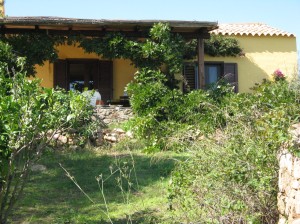 The fours week blogging course has come to an end, and it’s time to reflect.
The fours week blogging course has come to an end, and it’s time to reflect.
It has been an intensive four weeks and I’ve met a lot of friendly and very motivated people.
They have overcome problems and persevered to create their own space in the internet. It is easy to forget how daunting that can.
And so I applaud all of you from the course who have taken the first step.
Of course, not everyone managed to create a blog and some dropped out of sight (site!). But this too is a natural phenomenon and not to be scoffed at or scolded. Perhaps the time wasn’t right, or perhaps a second start will be needed.
For those of you who couldn’t or didn’t carry on for whatever reason, I thank you for joining the course anyway and hope that you have been able to take with you something of it for a later point in time.
For those of you who have questioned whether using blogs for teaching and learning purposes (I stress the learning part!) is worth the time involved, I can assure you that this is a good question and worth exploring further. What added value will a blog give your learners? The WOW effect? A new look for old methods? Or can it induce a new kind of methodology, or simply an addition outside the classroom that wasn’t possible before?
I’m sure there will be those of you blogging about that as well, and I look forward to reading your discoveries and conclusions for in everything I teach I make sure that I am learning.
The changes in technology are continueous. As Jenny stated in the live session, you may become used to a certain tool and then suddenly find it gone or changed and have to set out to find another one. But it is nothing to be afraid of. A teacher who cannot learn cannot truely teach.
I too have plodded on and tried this and that, asked for help, led the way and let others lead me, and so I am glad to have you join me on this journey as readers, writers, teachers, and acquaintances, making the world wide web a little smaller and bit more friendly.
Filed under: Letsblog2010 | Tagged: blogging, communities, letsblog2010, reflections | 5 Comments »







Following comments
Cartoon by Dave Walker. Find more cartoons you can freely re-use on your blog at We Blog Cartoons.
Write to be read. This is why we write blogs.
But how do we know if we are being read? Well, you can go to your statistics page if your blog has one (WordPress does 🙂 ), or you can ask people you know if they have been reading your blog.
But the most powerful message you can send ot someone who has written something is to leave a comment. This is a sure sign that someone has read what you wrote and it moved them enough to say something about it. But now how do you know if someone commented on a comment? How do you allow for the wondeful situation when a conversation results from a single post?
Do you need to go back again and again to check? This might be okay for your own blog, but if it’s one that you chanced upon, this will prove to be extremely time-consuming, especially if you regularly leave comments on blogs and also if you follow a number of blogs.
There are a couple of possibilities so yocna be informed of further comments but don’t need to return countless times to check.
One way is to subscribe to the comments of a certain post. There is often this option and you will be sent an e-mail.
Another option involves a very small button at the bottom of your screen. Cocomment will let you know if someone commented on a post you’ve also commented on. It turns orange and all you have to do is click on it to quickly see whatthe discussion is about. Then you can choose to ignore it or delve deeper.
It’s little tools like this that make blogging easier and more satisfying!
Filed under: Letsblog2010, Uncategorized | Tagged: blogging, comments, letsblog2010 | 1 Comment »